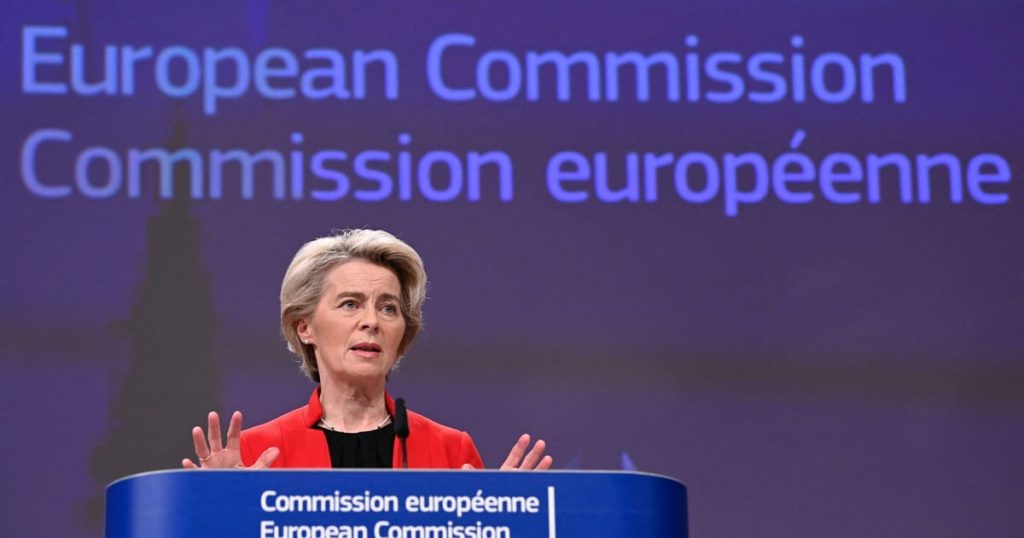The European Commission will allow countries greater flexibility in how they reduce public debt, as part of an interim fix while waiting for a longer-term deal on EU rules on government spending.
The rules were suspended during the Covid pandemic but that suspension is due to expire in 2024. Until now, goverments didn’t know whether the bloc would revert to the old rules while they waited for the conclusion of negotiations on the longer-term reforms, which have only just begun.
But the EU executive will set out a new temporary regime on Wednesday and it will mirror its proposed approach to the more permanent changes, giving countries more time to reduce excessive debt, according to draft guidance seen by POLITICO.
The announcement is urgent because governments must submit draft budgetary plans in the Spring.
In addition, the Commission won’t this year trigger a process that could result in financial sanctions for countries that breach the rules, but says it will do so in 2024, according to the draft guidance.
“The EU fiscal framework is currently in a transitionary phase: a return to the full implementation of the rules of the existing framework would fail to acknowledge the new post-pandemic reality,” the draft guidance said.
While unfinished negotiations mean “the current legal framework continues to apply,” the Commission says that “a number of adaptations would be needed”.
Draft guidance for 2024 incorporates “those elements of the Commission reform orientations that are consistent with the spirit of the existing framework.”
The EU’s spending rules, known as the Stability and Growth Pact, are aimed at keeping annual government spending to below 3 percent of GDP and public debt within 60 percent of GDP.
Spoiler alert
Countries will be asked to submit three-year fiscal plans in April — part of a regular exercise for monitoring by the Commission — aimed at ensuring the 3 percent annual deficit threshold is kept to, as well as “plausible and continuous debt reductions, or for debt to be kept at prudent levels, in the medium term,” the guidance said.
This tallies with a proposed switch from the current requirement to slash excess debt by 5 percent per year to multi-year downward debt trajectories, as suggested by the Commission in November.
Countries should also include how their planned reforms and investments “contribute to fiscal sustainability and sustainable and inclusive growth” — an element borrowed from the EU’s cash-for-reforms recovery fund — as well as how they plan to phase out costly energy support measures now that energy prices have abated.
In the spring, the Commission will give each country a spending target for 2024 in line with their own plans. If countries’ proposed targets are “not sufficiently ambitious,” the Commission will suggest a spending target tailored to a country’s debt profile and “consistent with the criteria set out in its reform orientation.”
The Commission also rules out triggering a sanctions process against countries in breach of EU fiscal rules this year.
“Taking into consideration the persistently high uncertainty for the macroeconomic and budgetary outlook at this juncture, the Commission considers that a decision on whether to place Member States under the [Excessive Deficit Procedure] should not be taken this spring,” the guidance said.
But it added it “will propose” to launch sanctions next year “on the basis of the outturn data for 2023.”
What now?
In parallel, the Commission says it will make formal legal proposals following a meeting of finance ministers in mid-March, where EU countries are meant to agree on a way forward on reforming spending rules, and after EU leaders give their nod at their end-of-March summit.
Draft Council conclusions, seen by POLITICO and meant to be endorsed by EU finance ministers, show general support for the Commission’s approach. But key divisions remain, including on how fast should debt decline in highly indebted EU countries, and how stringent should sanctions be.
After the Commission makes its formal proposals, negotiations with the Council and the European Parliament will begin, with the hope of wrapping them up before the spring 2024 European election.
“It will be crucial to reach agreement on the future economic governance framework as quickly as possible to have a revamped rules-based system in place and provide certainty to all stakeholders, including financial markets,” the Commission wrote in its draft guidance.
But the guidance to be issued on Wednesday looks like a dress rehearsal of the reform itself.

